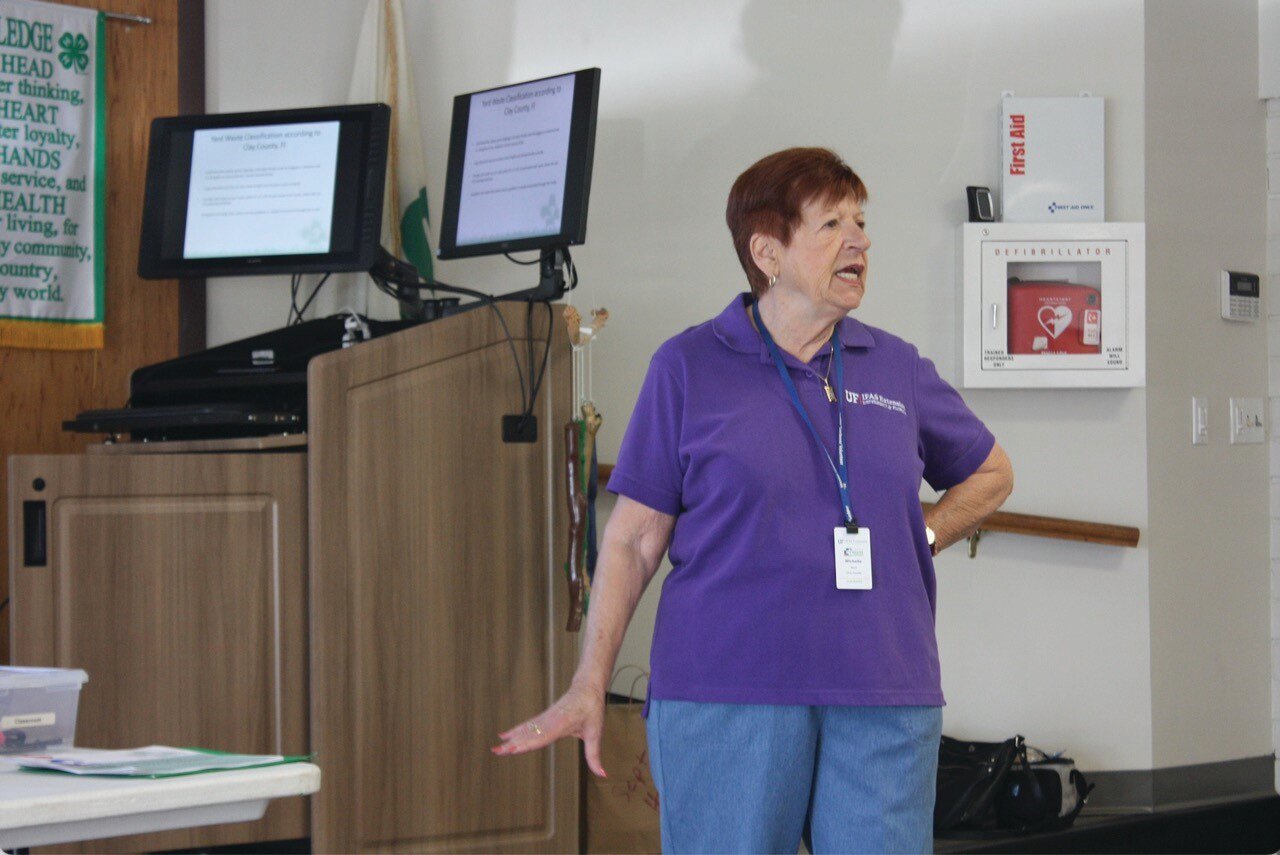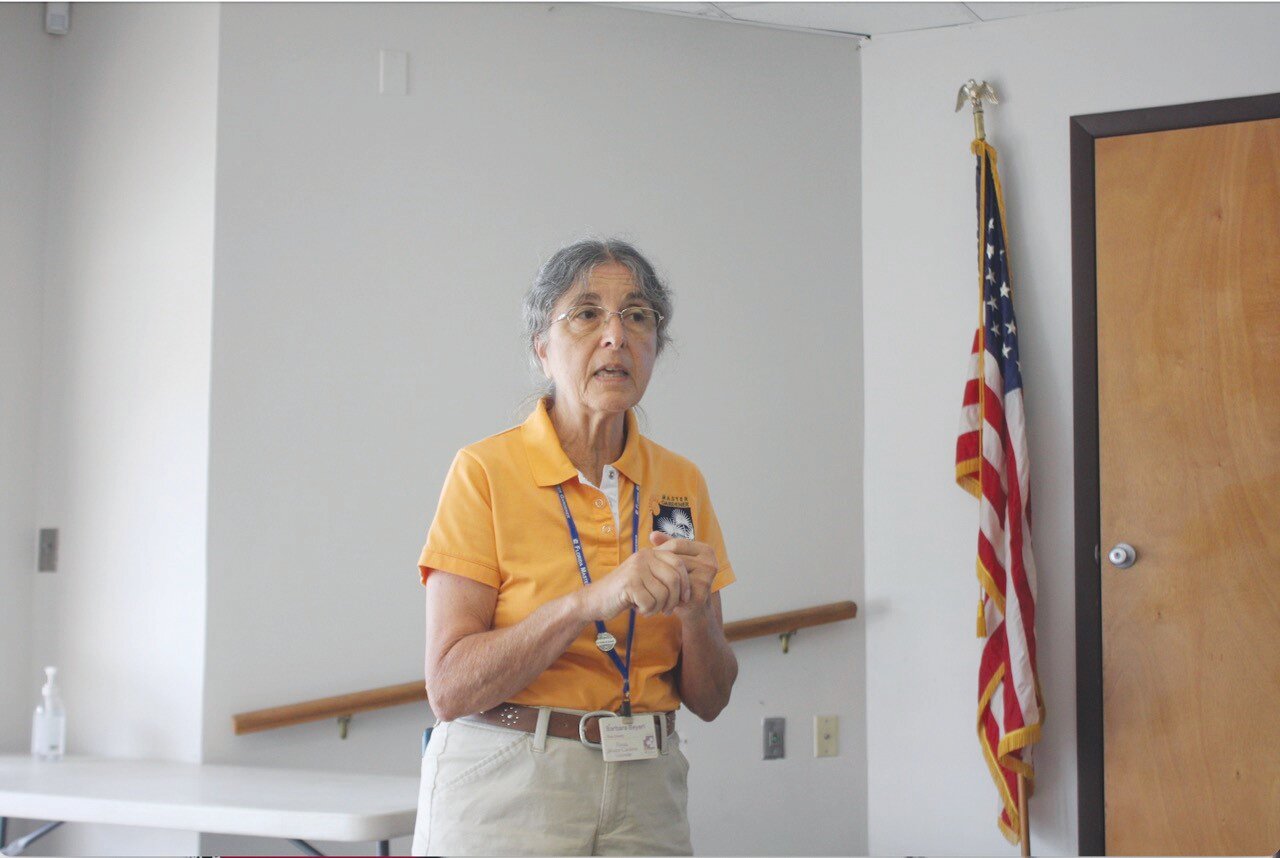Keeping waterways clean starts with properly disposing yard debris
GREEN COVE SPRINGS – Michelle Hord and Barbara Beyerl, volunteers with the UF/IFAS Florida Master Gardener Program, shared ways to dispose of yard debris properly and ways to protect the local …
This item is available in full to subscribers.
Attention subscribers
To continue reading, you will need to either log in to your subscriber account, below, or purchase a new subscription.
Please log in to continueDon't have an ID?Print subscribersIf you're a print subscriber, but do not yet have an online account, click here to create one. Non-subscribersClick here to see your options for subscribing. Single day passYou also have the option of purchasing 24 hours of access, for $1.00. Click here to purchase a single day pass. |
Keeping waterways clean starts with properly disposing yard debris
GREEN COVE SPRINGS – Michelle Hord and Barbara Beyerl, volunteers with the UF/IFAS Florida Master Gardener Program, shared ways to dispose of yard debris properly and ways to protect the local waterways in their Gardening Advice Series. The series advocates for nine environmentally conscious principles.
“They overlap like a web,” Hord said.
The principles are as follows: growing plants in the right environment, using water efficiently, limiting fertilizer use, mulching when possible, attracting wildlife (to retain biodiversity), limiting yard waste, recycling yard waste, reducing stormwater runoff and keeping the waterfront clear.
In the county, yard waste is classified as small branches, leaves, grass clippings, and palm fronds, which must be bagged or sealed in a 40-gallon or less container and cannot exceed 50 pounds. Large branches must be cut into four-foot lengths and stacked curbside. Providers can collect up to 135 cubic feet of yard waste, about the size of five washing machines.
Beyerl said one important tip to remember is that excess grass clippings should not be placed on the street but instead blown back into the yard.
“If you happen to be on the street with a storm drain, it’s a really good idea for the safety of everybody in your neighborhood to shovel and rake that debris out of the drain area and put it out for pickup or put it into your bushes or (elsewhere in the yard),” Beyerl said.
Hord said she even goes on the street to sweep up excess debris from the street after workers pick up large piles of yard waste after a storm.
“The little, tiny species are still there. That’s just going down the storm drain,” she said.
To address this issue, Hord takes a broom and a dustpan and puts those yard clippings into a garbage bag for later. By leaving out multiple large garbage cans, residents can also eliminate the use of residual plastics and keep potential pollutants that would leave behind a mess contained and accounted for. Waste Collectors usually accommodate residents who use more than one can.
“Put out as many garbage cans as you have to, as it’s easy not to get a mess on the road if it’s in a container,” Beyerl said.
When disposing of yard waste, preserving the health and beauty of the county’s waterways is paramount, and the residents at the meeting were eager to learn more.
“It’s so very important, yet so very boring. It’s not just the grass clippings, but all yard waste that contributes to (blue-green) algal blooms in the waterways,” Hord said.
After a rainstorm, water picks up debris, soil, motor oil, pesticides and other pollutants along the way. The sludge flows into retention ponds and streams that eventually feed into major waterways, most notably Florida’s longest, the St. Johns River. “Remember, what (debris) goes out of your yard, you’re only putting somewhere else. So, if you have a lot of fertilizer on your yard, it’s only going to stream down and go out into the stormwater drainage,” she said.
Overusing fertilizer in lawn maintenance can lead to algae blooms downstream.
In June and July, county health officials issued alerts for harmful blue-green algal toxins in Doctors Lake. Sunny days, warm temperatures and still water conditions ripen environmental concerns, but with excess nutrients such as nitrogen and phosphorus from fertilizers playing a factor, residents should do their part to negate stormwater runoff to improve water quality.
Hord and Beyerl also touched on the significance of compost and brush piles, which limit yard disposals, provide much-needed nutrients for the soil and can even attract wildlife such as redtail hawks and owls
Members and residents absorbed the new knowledge, knowing that their actions could directly impact the water quality in the area. As they left the building, they carried home gardening tips and a shared dedication to protecting the state’s waterways for generations.










